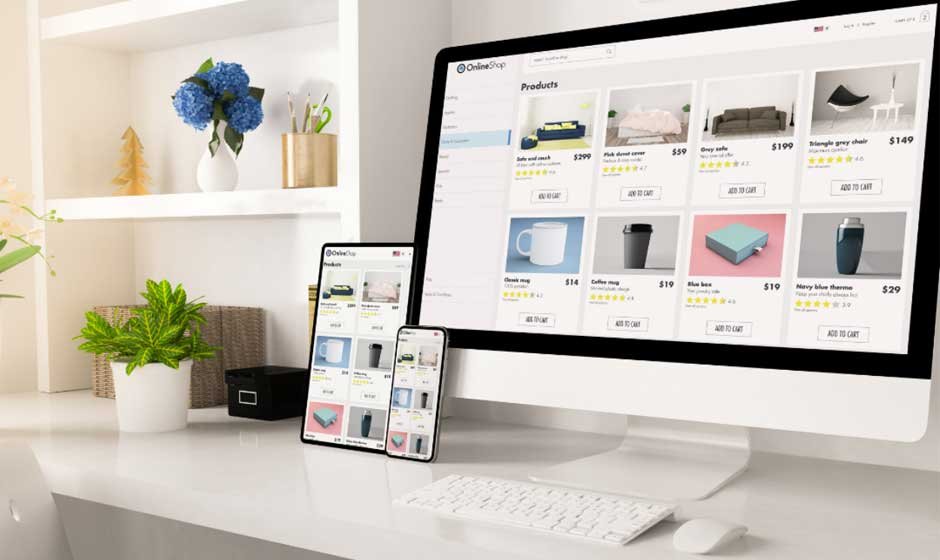A visually attractive website can capture attention, but design alone does not guarantee engagement or conversions. The most successful websites blend aesthetics with functionality, ensuring visitors can easily find information, complete tasks, and enjoy a seamless user experience. In today’s digital economy across the USA and Canada, where businesses compete fiercely for online visibility, the functional side of design determines whether users stay or leave.
This article explores how functionality influences engagement, the principles that make design effective, and how businesses can adopt a practical approach to build websites that perform.
1. The Real Value of Functionality in Web Design
Functionality is the backbone of every successful website. It refers to how efficiently users can interact with a site, navigate its pages, and complete desired actions such as making a purchase, submitting a form, or booking a service. A well-designed website is not just about appealing colours and imagery but about how every design choice supports user goals.
A functional design improves:
- User Experience (UX):Clear structure and intuitive navigation make visitors feel comfortable exploring.
- Search Engine Performance:Search engines prioritize websites that load quickly, are mobile-friendly, and are easy to use.
- Conversion Rates:When users find what they need without friction, they are more likely to take action.
A 2024 study by HubSpot revealed that 88% of online consumers are less likely to return to a site after a poor user experience. This demonstrates that usability issues, such as broken links, slow load times, or confusing menus, can have direct financial consequences. Businesses that invest in functionality often see measurable improvements in engagement metrics, such as lower bounce rates and longer session durations.
2. Designing for Users, Not Just for Looks
Designing with users in mind means focusing on their needs and behaviours. A functional website anticipates user intent and provides clear paths to achieve it.
Here are key principles that guide user-centric design:
- Clarity and Simplicity:Each page should have a clear purpose. Overly complex visuals or navigation can confuse users.
- Consistency:Fonts, buttons, and colour schemes should remain consistent throughout the site to build trust and familiarity.
- Accessibility:Websites must be inclusive. Features like readable fonts, colour contrast, and keyboard navigation improve usability for everyone, including people with disabilities.
- Speed and Performance:Google research shows that 53% of users abandon a mobile site if it takes longer than three seconds to load.
- Mobile Optimization:With mobile devices driving over 60% of global web traffic, a responsive design is essential for engagement.
When executed correctly, these principles help visitors achieve their goals efficiently. For example, a company that develops websites for businesses will often conduct user testing to identify friction points and refine navigation flow before a public launch. This process ensures that the final design aligns with user expectations and maximizes interaction quality.
3. How Functionality Enhances Business Outcomes

Functional design directly impacts business success. A website’s usability influences how potential customers perceive a brand and whether they trust it enough to take action.
- Increased Conversion Rates:
Simple checkout processes, visible call-to-action buttons, and structured product information reduce user hesitation. Shopify reports that simplifying checkout steps can increase conversions by up to 35%. - Better Retention and Loyalty:
Returning visitors often appreciate consistency. Sites that remember preferences, provide personalized content, and ensure smooth navigation foster loyalty. - Improved SEO Rankings:
Search engines evaluate site usability signals such as bounce rate, dwell time, and mobile performance. A functional design supports SEO efforts naturally by enhancing technical performance and engagement metrics. - Stronger Brand Credibility:
A professional, well-functioning site gives a sense of reliability. Users often associate visual polish combined with a seamless experience as indicators of a trustworthy brand.
In North America, where digital competition is intense, companies that prioritize functionality are better equipped to convert traffic into meaningful results. A polished yet practical website helps small businesses compete with larger corporations by providing equal access to online visibility and credibility.
4. Practical Steps to Build a Functional Website
Building a high-performing website involves both planning and ongoing refinement. Here’s a structured approach businesses can apply:
Step 1: Start with a Purpose
Before designing, clarify the website’s primary goal, whether it’s lead generation, sales, or information delivery. Every design element should support that objective.
Step 2: Map the User Journey
Identify how visitors will navigate the site, what pages they will access, and what actions you want them to take. Tools like user flow diagrams help visualize interactions and minimize confusion.
Step 3: Prioritize Navigation and Layout
Menus should be simple and logical. Keep the most important sections, such as services, contact, and about, easily accessible from the top navigation.
Step 4: Focus on Content Structure
Functional design depends on readable, well-organized content. Use headings, bullet points, and concise paragraphs. Ensure key information is above the fold where users can find it immediately.
Step 5: Optimize for Speed and Mobile
Use lightweight code, compressed images, and caching. Test responsiveness across devices. A fast and mobile-friendly site encourages longer visits and improves ranking on Google and Bing.
Step 6: Test, Measure, and Improve
Post-launch, use analytics to monitor performance. Metrics like average session time, exit rate, and conversion data reveal what works and what doesn’t. Continuous improvement ensures the site remains effective over time.
Functional design is not a one-time project but an ongoing strategy that evolves with user behaviour, technology, and market trends.
5. Balancing Aesthetics and Usability

A well-designed website should look professional without compromising usability. The ideal approach balances visual appeal with function. Too much emphasis on visuals may slow load times or distract users, while neglecting aesthetics can make a site appear outdated or untrustworthy.
Effective design uses aesthetics to enhance, not overshadow, usability. For example, colour and typography can guide attention, while whitespace helps users focus on essential elements. Good designers understand that every pixel serves a purpose, either to inform, guide, or convert.
In both the U.S. and Canadian markets, audiences expect websites that look refined but also work efficiently. Balancing these expectations through strategic functionality and design cohesion leads to lasting engagement.
Beyond visual appeal, functional website design drives meaningful engagement by prioritizing usability, clarity, and performance. It ensures that every visitor, whether browsing from Toronto or New York, experiences a site that feels effortless to use and reliable to trust.
Businesses that view web design as a strategic investment rather than a creative exercise gain measurable benefits: stronger engagement, higher conversions, and a better brand reputation. By focusing on how design serves users, not just how it looks, organizations can build online experiences that truly perform.














